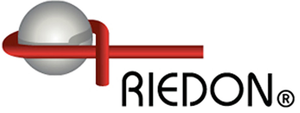Precision Shunts Overview and Applications
Precision shunts are very precise resistors inserted into a circuit in order to measure the current flowing through that circuit. The shunt does this by providing a small voltage across its resistance proportional to the current flowing through the shunt. This can be clarified using Ohm’s Law, which states that the voltage will be equal to the current multiplied by the resistance (V=IR). Shunts are typically rated according to a full-scale current rating and the corresponding voltage output.

Electrically, it is best to place a panel mounted shunt in the ground or return line near the voltage source, as this helps to limit the voltage potential between the shunt and adjoining grounded panels. In a majority of Busbar Shunt applications, the shunt should be placed on the ground or return conductors to minimize shock hazards. Precautions must be taken to ensure proper creepage and clearance to adjoining conductors and panels to allow for the system voltage.
Mechanically, the panel mounted shunts should be placed such that the resistive elements are vertical. An easy way to remember this is that the shunt should be mounted to a wall (or panel) and not the base or top of an enclosure. Busbar shunts should be bolted to the busbars with a thin film of conductive grease on the mating surfaces and the bolts firmly torqued to specification. Large, high current shunts will benefit from additional insulated support mechanisms to relieve stress to the manganin/terminal solder joints. In addition, it may be necessary to allow for some thermal expansion via the use of flexible interconnects.
 Typical applications include battery monitoring for off-grid energy storage in both recreational vehicles and remote locations. These types of applications are often used in conjunction with solar arrays or wind generation to charge the batteries. Forklifts and other light industrial vehicles operating on battery power use shunts to assist in monitoring battery condition. PV inverters and other power conversion equipment (AC to DC or DC to AC), DC motor drives, welding equipment, conveyors in mining operations, and electroplating equipment are all places where high DC currents are monitored and used for closed-loop feedback operations or real-time equipment condition monitoring.
Typical applications include battery monitoring for off-grid energy storage in both recreational vehicles and remote locations. These types of applications are often used in conjunction with solar arrays or wind generation to charge the batteries. Forklifts and other light industrial vehicles operating on battery power use shunts to assist in monitoring battery condition. PV inverters and other power conversion equipment (AC to DC or DC to AC), DC motor drives, welding equipment, conveyors in mining operations, and electroplating equipment are all places where high DC currents are monitored and used for closed-loop feedback operations or real-time equipment condition monitoring.
Precision Shunts are specified at a full-scale current rating that results in a given output. For example, an RSA-15-100 will have a 100mV output at 15 amps. For continuous operation, it is recommended that the shunt be operated at no more than 2/3rdits full-scale current rating. This means that the aforementioned 15 amp shunt should be operated at no more than 10 amps continuously.
Next determine the desired voltage output. The industry standards in North America are 50mV and 100mV, while 60mV and 75mV are common in Europe. It is possible to design the shunt for virtually any desired output, and we welcome the opportunity to customize these devices to the customer’s requirement. A tolerance of 0.25% is standard on most shunts, while tolerances as tight as 0.1% may be available at customer request.
Riedon offers shunts with full-scale current ratings from 1 amp to 10,000 amps all with output voltages of either 50mV or 100mV as standard. Other output voltages are available upon request. The standard output voltage tolerance is at least ±0.25% on all devices with ±0.1% being standard tolerance on the RSN series. Please consult the factory for the availability of ±0.1% tolerance on other models.
When choosing Riedon's precision shunts you are purchasing directly from the manufacturer and benefit from exceptional one on one customer service. Riedon has the shortest lead time in the industry and is a price leader. And finally, these products are easily configured to meet customer requirements.
In summary, Riedon’s line of ammeter shunts provide a robust, highly accurate means of measuring a wide range of currents from 1 to 10,000 amps. There are numerous standard configurations available to allow for use in diverse applications, yet they may be easily customized to meet challenging packaging requirements. Calibration documentation is available, and a broad array of models are in stock and ready to ship.
